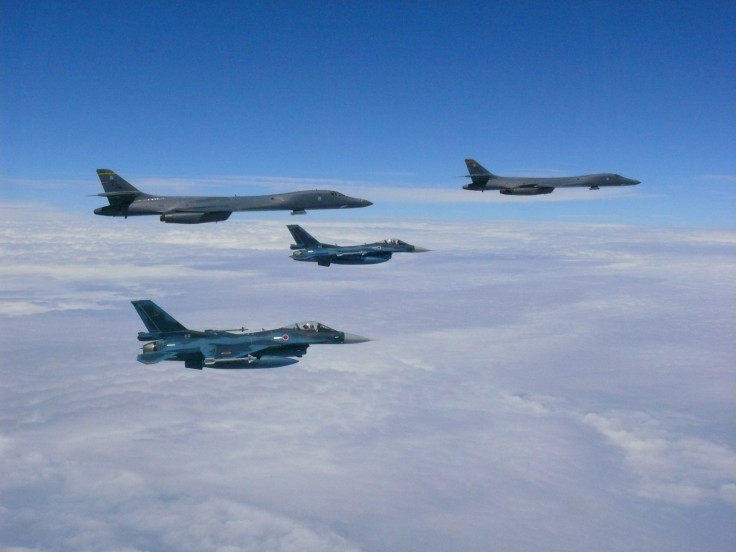US flies B-1B bombers over Korean peninsula practising night drill
President Donald Trump holds security talks with top US defence officials on how to handle North Korea.

The US flies B-1B strategic bombers over the Korean peninsula late on Tuesday, 11 October, as a strong show of force amid the ongoing tensions in the region. This marks the first time the sophisticated bombers are cruising the Korean peninsula skies along with South Korean and Japanese fighters jets at night.
The US routinely flies the nuclear-capable bombers originating from its Guam airbase whenever there is a provocative act from Pyongyang such as a missile launch or a nuclear test. However, it was unusual for Washington to send the bombers at night this time.
South Korea's Joint Chiefs of Staff said the bombers entered the Korean Air Defence Identification Zone at about 9pm on Tuesday (11 October). While flying across the divided peninsula, the bombers simulated attacks against ground targets.
Flanked by South Korea's F-15s, the bombers also briefly carried out firing exercises above the Yellow Sea as well. "The South and the US have agreed on the rotational deployment of (U.S.) strategic assets. This operation was conducted against that backdrop," a government official from South Korea's presidential office told reporters on condition of anonymity, according to Yonhap news agency.
The US military stressed this is the first time the Lancer bombers were engaged in a combined training exercise at night along with Japanese and South Korean forces.
"Flying and training at night with our allies in a safe, effective manner is an important capability shared between the US, Japan and the Republic of Korea and hones the tactical prowess of each nations' aviators. This is a clear demonstration of our ability to conduct seamless operations with all of our allies anytime anywhere," said US Air Force Major Patrick Applegate.
This latest show of strength comes just as US President Donald Trump held a discussion with top-ranking defence officials on handling North Korea. The White House said Secretary of Defense James Mattis and Chairman of the Joint Chiefs of Staff General Joseph Dunford were also part of the security meeting. Reports also emerged later suggesting Trump may visit the heavily guarded inter-Korean border, demilitarised zone (DMZ), when he visits South Korea in the coming days.
© Copyright IBTimes 2024. All rights reserved.






